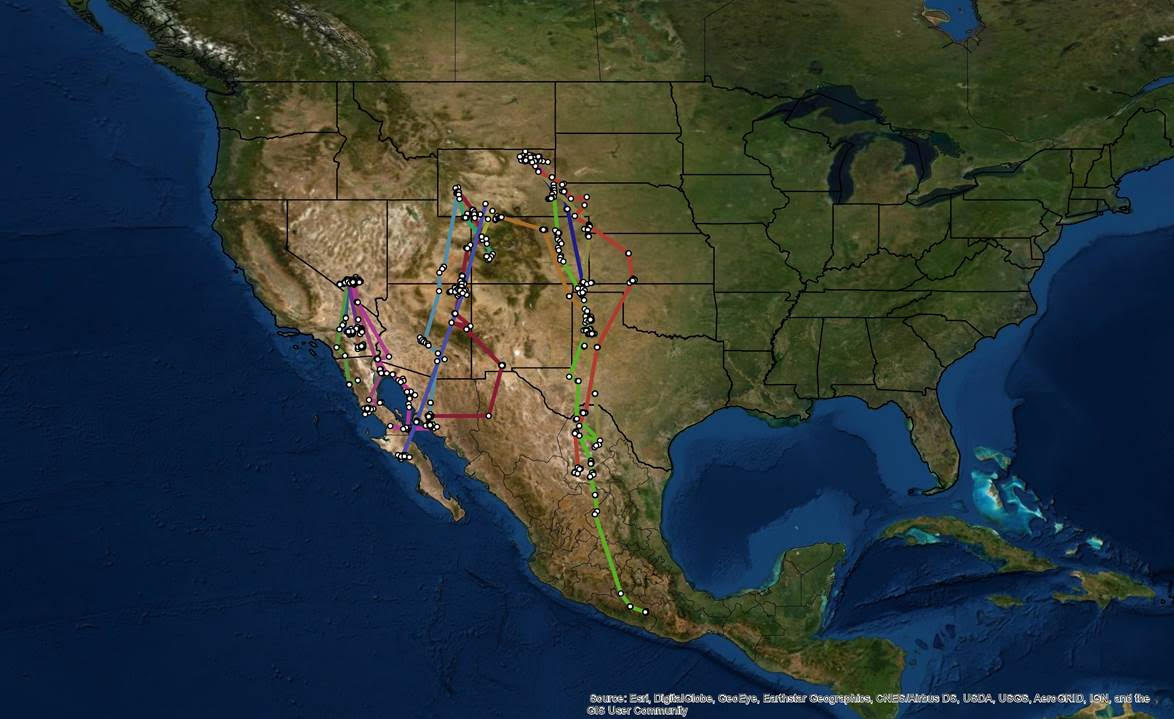Burrowing owls were once common across grasslands in the United States and Canada during the breeding season, but in some parts of their range, their population numbers and distribution have shrunk. The burrowing owl is a Species of Greatest Conservation Need in Wyoming, so we spend extra effort studying these animals to bolster their populations.
Game and Fish partnered with a regional study that includes 11 western states and 3 Canadian provinces to learn more about burrowing owls. Since 2013, almost 100 adult burrowing owls have been captured and fitted with solar-powered transmitter “backpacks” so we can follow their seasonal movements. We call this a full annual life-cycle conservation project.
In 2019, volunteers helped us put transmitters on six male and six female owls in six locations across Wyoming. The results have been remarkable:
 So far we’ve learned that parts of Arizona, Colorado and Texas are important migratory stopover sites for owls that breed in Wyoming, and several states across Mexico are important wintering areas.
So far we’ve learned that parts of Arizona, Colorado and Texas are important migratory stopover sites for owls that breed in Wyoming, and several states across Mexico are important wintering areas.
There are plans to deploy more transmitters across Wyoming in 2020. Project results will help direct our conservation actions on the landscape.
Game and Fish partnered with a regional study that includes 11 western states and 3 Canadian provinces to learn more about burrowing owls. Since 2013, almost 100 adult burrowing owls have been captured and fitted with solar-powered transmitter “backpacks” so we can follow their seasonal movements. We call this a full annual life-cycle conservation project.
In 2019, volunteers helped us put transmitters on six male and six female owls in six locations across Wyoming. The results have been remarkable:
- Two owls never left their breeding grounds so are likely dead.
- Ten began migrating south from late July through late October; 1 stalled near Torrington and may be dead and 1 was found dead on a hay bale in Kansas.
- Six of the remaining 8 owls wintered in Mexico. Three from western Wyoming migrated west of the Continental Divide, stopped over in Arizona to rest and refuel, and then wintered in western Mexico. Three from eastern Wyoming migrated east of the Continental Divide, stopped in eastern Colorado and northwestern Texas, and wintered in north-central and southern Mexico.
- The last 2 owls appear to have wintered in western Colorado, but their transmitters may have “shut off” when day length shortened. We hope to get more information this spring.
- One female captured at her nest burrow north of Gillette traveled the furthest south of any owl in the entire study – 2,200 miles one-way! She wintered in Mexico near Acapulco, and recently started spring migration.
There are plans to deploy more transmitters across Wyoming in 2020. Project results will help direct our conservation actions on the landscape.
Publish Date
Answered By
Andrea Orabona
Job Title
Nongame bird biologist
Photo
IMG_8598
Ask Game ID
240
Node order
62
Parent Node
1135
